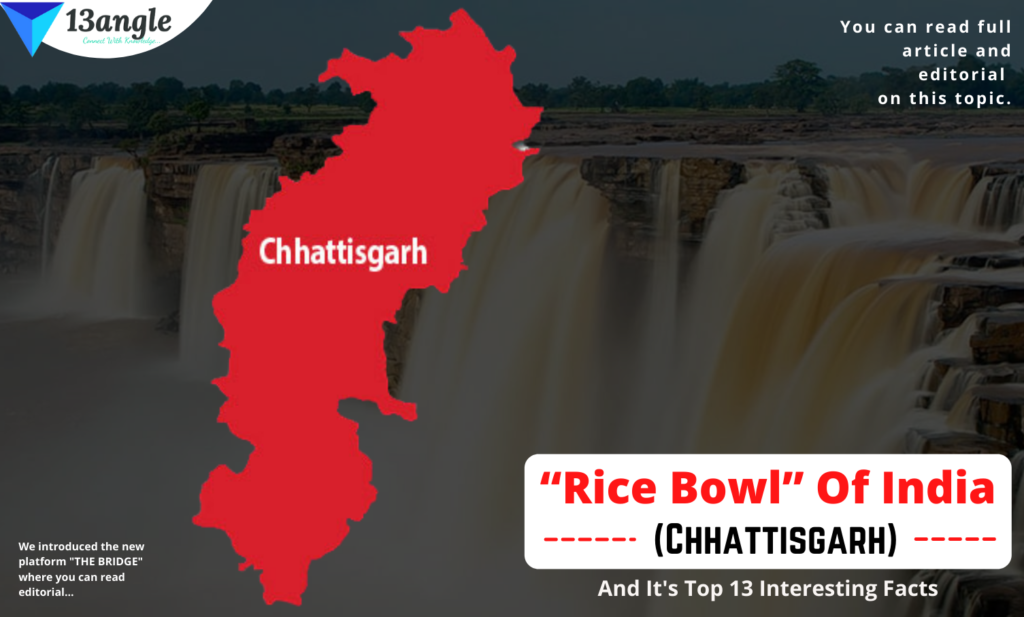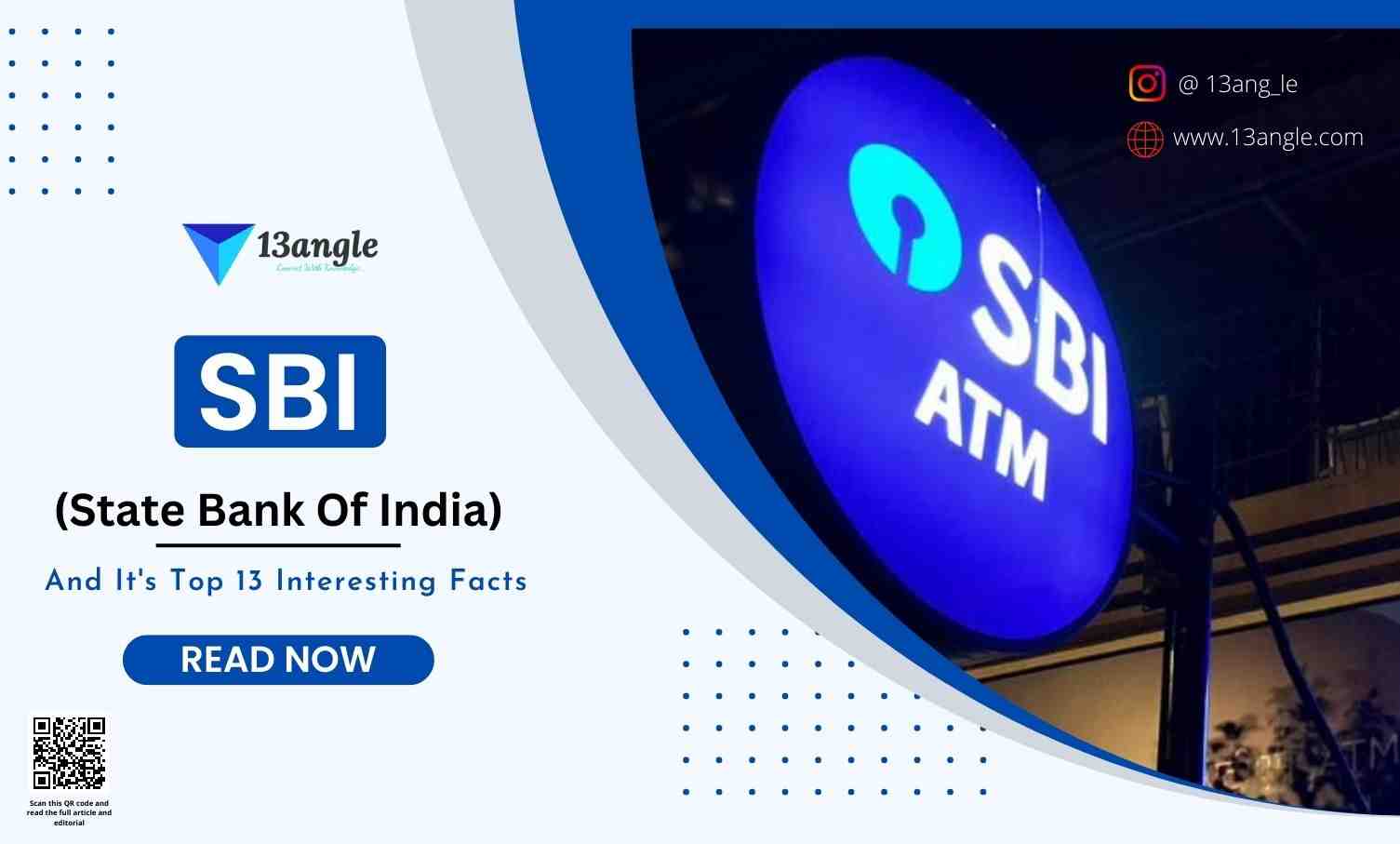
- “Rice is the sole crop of the plains of Chhattisgarh, and due to immense production of rice this is called the rice bowl of India.”
Location

Chhattisgarh, state of East-Central India. It is bounded by the Indian states of Uttar Pradesh and Jharkhand to the north and North East, Orissa to the east, Telangana (Formerly part of Andhra Pradesh) to the South, and Maharashtra and Madhya Pradesh to the West.
The geographical location of Chhattisgarh is 17 degrees 46 minutes north to 24 degrees 5 minutes north latitude and from 80 degrees 15 minutes east to 84 degrees 20 minutes east longitude. Chhattisgarh`s geography is diverse and thus is very interesting.
History
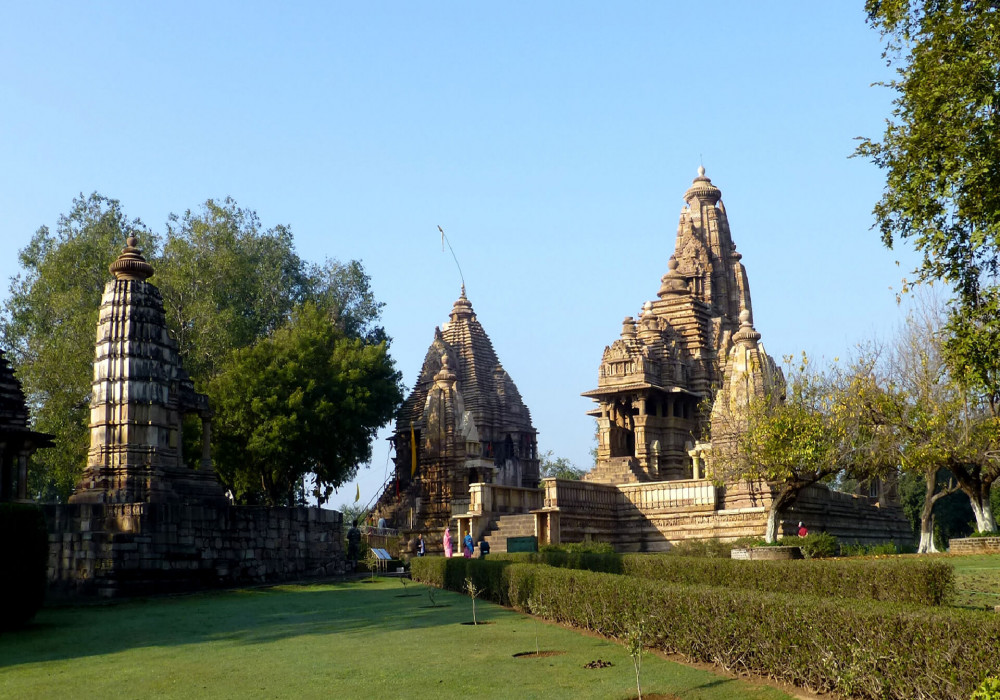
1. Ancient And Medieval History
- In ancient times, this region was known as Dakshina Kosala. This area also finds mention in Ramayana and Mahabharata. Between the sixth and twelfth centuries, Sharabhpurias, Panduavanshi, Somavanshi, Kalachuri, and Nagavanshi rulers dominated this region. The Bastar region of Chhattisgarh was invaded by Rajendra Chola I and Kulothunga Chola I of the Chola dynasty in the 11th century.
2. Colonial And Post Independence History
Chhattisgarh was under Maratha rule (Bhonsles of Nagpur) from 1741 to 1845 AD. It came under British rule from 1845 to 1947 as The Chhattisgarh division of the central provinces. Raipur gained Prominence over the capital Ratanpur with the advent of the British in 1845. In 1905, the Sambalpur district was transferred to Odisha and the states of Surguja were transferred from Bengal to Chhattisgarh.
The area constituting the new state merged into on 1 November 1956, under the state’s ReorganizationAct, 1956, and remained a part of that state for 44 years. Prior to its becoming A part of the new state of Madhya Pradesh, the region was part of old Madhya Pradesh state, with its capital at Nagpur. Prior to that, the region was part of the central provinces and Berar (CP and Berar) Under British rule. Some areas constituting the Chhattisgarh state were Princely states under British rule, but later on, were merged into Madhya Pradesh.
3. Separation Of Chhattisgarh
Mantralaya in new Raipur.
The present state of Chhattisgarh was carved out of Madhya Pradesh on1 November 2000. The demand for a separate state was first raised in the 1920s. Similar demands kept cropping up at regular intervals; however, a well-organized movement was never launched. Several all–party platforms were formed and they usually resolved around petitions, public meetings, seminars, rallies, and strikes. A demand for separate Chhattisgarh was raised in 1924 by the Raipur Congress unit and also discussed in the annual session of the Indian Congress at Tripuri. A discussion also took place on forming a regional Congress organization for Chhattisgarh was put forward but was not accepted. In 1955, a demand for a separate state was raised in the Nagpur assembly of the then state of Madhya Bharat.
The 1990s saw more activity for a demand for the new state, such as the formation of a state-wide Political forum, especially the Chhattisgarh Rajya Nirmana munch. Chandulal Chandrakar led this forum, several successful region-wide strikes and rallies were organized under the banner of the forum, all of which were supported by major political parties, including the Indian National Congress and the Bhartiya Janta Party.
The new National Democratic Alliance (NDA) government sent the redrafted separate Chhattisgarh bill for the approval of the Madhya Pradesh assembly, where it was once again unanimously approved and then it was tabled in the Lok Sabha. This bill for a separate Chhattisgarh was passed in the Lok Sabha and the Rajya Sabha, paving the way for the creation of a separate state of Chhattisgarh. The president of India gave his consent to the Madhya Pradesh reorganization act 2000 on 25th August 2000. The Government of India subsequently set one November 2000, as the day the state of Madhya Pradesh would be divided into Chhattisgarh and Madhya Pradesh.
Culture Of Chhattisgarh
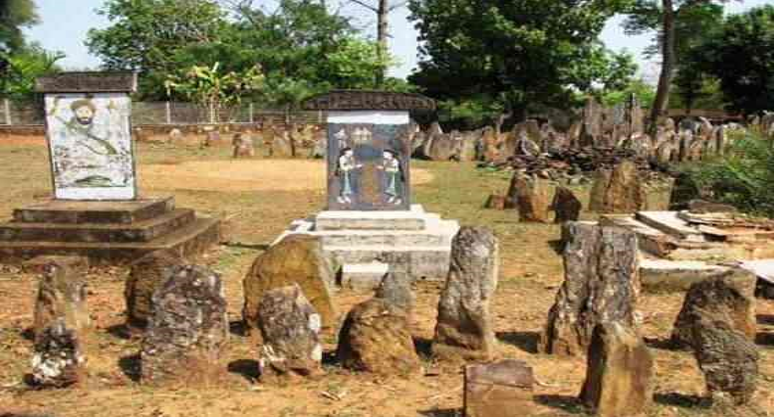
The tribal culture in Chhattisgarh is quite vast and varied with its unique ways and means. The culture has its own uniqueness. If you have an inclination towards knowing about various tribal Cultures and their various ways and means, then Chhattisgarh is the right place to be and a study of the tribal culture in Chhattisgarh would be quite interesting. If you want more insights into the tribal culture in Chhattisgarh, India you can visit the Memory Pillars of Gamawada in Dantewada, Maria Menhirs in Bastar, and Anthropological museum in Bastar.
This place is a famous megalithic burial site, where some pillars have been dated as old as 3000 years. The first look at the site will necessarily remind you of the world-famous stone henge in the United Kingdom. This site presents an age-old tradition of the local tribes where these giant-sized stone pillars were erected centuries back by the local inhabitants in the memory of their deceased elders, relatives, and prominent persons of the tribe. With the evidence of the use of iron in these memory pillars, it is believed that the people here might have probably been the first to use molten iron in India.

These monumental stones were set up by people belonging to the Maria tribe to honor the memory of the deceased persons. The size of these stones varies which is in tune with the social status of the deceased.
There are some drawings on these stones that display objects and acts treasured by that person. It is a custom to drop a bit of chewing tobacco at the base of these menhirs as a mark of reverence to the departed souls.

- Chhattisgarh, India offers a quick understanding of the might of the Buster Empire as well as the region’s evolution. Official records show that this museum was set up in the Year 1972. This museum also offers an ideal window – a view of the lifestyles of different Adivasi tribes in Bastar to a visitor hard-pressed for time.
The Tribe Of Chhattisgarh
Chhattisgarh, a state that is at the vanguard of Indian industries and also a repository of minerals has a diverse cultural legacy. Chhattisgarh and tribal culture are two tautological terms since a third of the state’s population are dominated by tribals.
The tribes of Chhattisgarh are a unique race that mainly inhabits the dance forests of Baster. In fact, more than 70% of Baster’s population is composed of tribal’s who account for 26.76% of Chhattisgarh’s entire tribal population. The lifestyle of the tribal people is unique and embedded with traditional rituals and superstitions. They are friendly and jovial lot who are industrious and diligent. Although shrouded in poverty, they leave life to the hilt and love to celebrate every joyous occasion. Food, drink, music, dance, mirth, and merriment add color to their otherwise simple lives. The tribal women also love to adorn themselves in ethnic jewelry. One of Chhattisgarh’s eminent tribes is the Gonds of the Kotoriya tribe. The etymological connotation of their name comes from the Telugu term “Kond” Meaning hills. The Gonds dominate most of Chhattisgarh’s tribal population and primarily depend upon agriculture, forestry, cottage industries, hunting, and fishing for their subsistence. The talking point of the lifestyle and culture of the Gond tribal’s is their Ghotul marriage policy, a one-of-a-kind arrangement for conducting the nuptial rituals. Another tribe, the Abuj Maria, lives in isolation in the dense and secluded enclaves of the forests of Narayanpur Tehsil in Basir . There is a ferocious and barbaric tribe who believe in primitive customs and are hardly tempted by the material pleasures of life.
1. Gonds
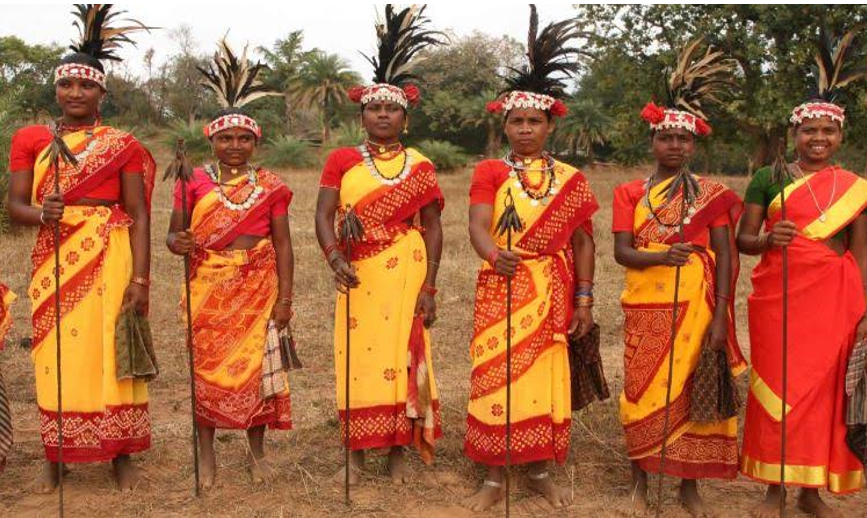
Chhattisgarh is a nature lover’s paradise. The state provides a glimpse of central India’s cultural potpourri and of the prevailing lifestyle. The tribes of Chhattisgarh are mostly a primitive race who faithfully follows all traditional customs and their archetypal age-old ritual. The oldest and most populous tribe of Chhattisgarh are the Gonds
The Gonds Tribals, who are also recognized as the Koytorias are widely dispersed throughout the state. However, they mainly predominate the dense forests enclosed in southern Chhattisgarh’s Bastar district that accounts for more than 20% of Chhattisgarh’s population. The three principal subcastes of the aboriginal Gonds are the Dorla, Maria, and Muria races. The etymological significance of the term Gond is derived from the Telugu connotation “Kond” meaning hill. The tribal economy is predominantly agrarian. But the poverty-stricken people also depend upon forestry, local cottage industries, hunting, and fisheries for their economic subsistence. Some of the Gond people are however employed in cushy primary sector jobs as well as other allied industries. The unique and one-of-a-kind Ghotul marriage tradition of the Gonds is renowned all across the world. They mainly practice the traditional Hindu customs and marry within the family in order to preserve the customary completion of the nuptial vows within the family. Of course, some of the romantic Daredevils choose to elope with their beloved. Gond marriages however are not a bed of roses. Remarriage, widow marriage, divorce, and marrying in-laws, as well as brothers and sisters, are common affairs. Gond society is somewhat matriarchal where the groom has to pay a substantial dowry to the bride’s family to pay his due respects.
2. Abhuj Maria
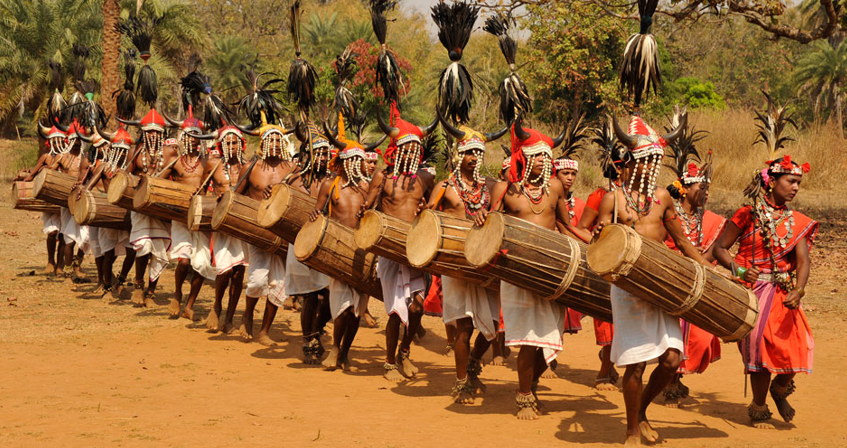
- It is indeed a marvel do visit Chhattisgarh with its unparalleled natural beauty and diverse tribal cultural legacy. The fascinating tribal culture can be had at a glance by visiting picture perfect state. Amongst the various tribal’s residing in Chhattisgarh, the Abhuj Maria race of aborigines deserve special mention. The Abhuj Maria race of tribal people is one of the principal sub castes of the Gond tribals. They live in isolation and inhabit the secluded enclaves of Narayanpur tehsil of Bastar district. The area inhabited by the Abhuj Maria tribals is a dense forest that sprawls across nearly 1500 miles of lush greenery. The Abhuj Maria tribal’s are so much feared by mankind. They are a primitive race whose mannerisms are rather ferocious. They savage and barbaric tribesmen are hostile to strangers are sometimes directly shot with arrows. This hill Maria tribal’s live in the forest enclosure in a world of their own, completely out of the touch with human society. Money and other material pleasures seldom tempt the people of this race. They are hardly affected by the ravage of time and their recluse lifestyle not only keeps them out of touch with modern civilization, it also helps to preserve their archetypal tradition and customs. In fact the Abhuj Maria is one of the few tribes that have many to keep their quintessential culture alive and unaffected by the vestiges if time. The tribal people are scantily clad and simply cover themselves with a loincloth. However they are very fond of traditional ethnic jewellery, they adorn themselves with several iron rings strung around theirneck. The women loves wearing earring and sometimes pierce as many as 14 holes in their ears and hang two rings or studs from them. The Abhuj Maria tribal’s are more bestial than human in their characteristics. They seldom clean themselves or their garments. Even when drinking water, they don’t use the normal human convention of using a vessel or container. Instead they drink straight from the pond replicating an animal.
3. Bison Horn Maria

Bison Horn Maria is one of the famous tribal groups of India. Mostly found in Chhattisgarh’s Bastar region, they are a major sub-caste of a tribal community called Gond. Apart from the Jagdalpur Tehsil towards the south of the river Indravati in the state of Chhattisgarh, they mainly reside in the district of Garhchiroli in Maharashtra as well as some parts of Madhya Pradesh. Their introverted nature makes them live in isolation in the interiors of dense forests areas of these states. This tribal community of Chhattisgarh derived its name from their unique custom of wearing a distinctive headdress, which resembles the horns of a wild bison. They generally wear that headdress during marriage dances or other ceremonies. The main distinct language spoken by this tribe of Chhattisgarh is Dandami Maria. Some of them even speak mutually unintelligible Gondi dialects, which is an oral language of Dravidian origin.
The Bison Horn Maria men have got a distinct hairstyle of the long ponytail. Besides that, they carry a tobacco box and a special kind of comb. This comb remains attached to their loincloth. Women of Bison Horn tribal groups generally dress in white skirts. They even use varied jewelry for adornment. The Bison Horn-shaped headdress worn by them is nowadays made of cattle horns because of the scarcity of Bison Horns. Those headdresses are placed on a frame of bamboo and decorated with feathers of peacock or chicken and hanging cowry shell strings. Such a headdress is passed on from one generation to another.
4. Muria
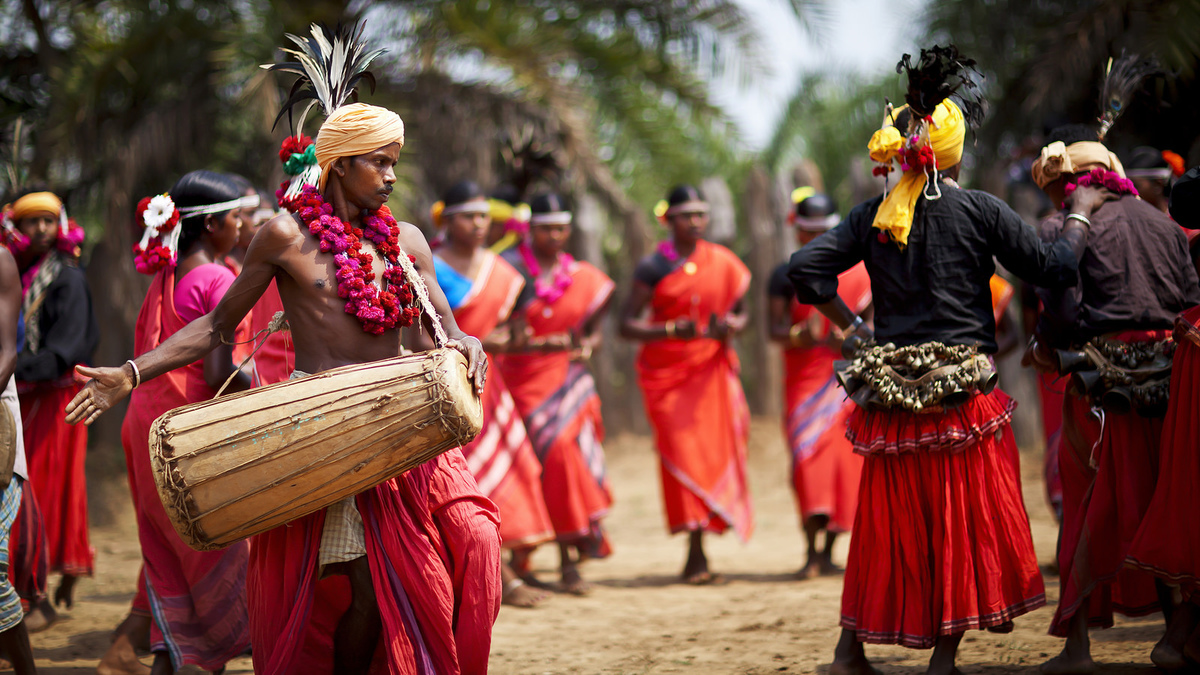
- Chhattisgarh, the “rice bowl” of India is famed for its mind-blowing natural splendour, cultural extravaganzas, storehouse of minerals and power and large iron and steel plants. The populace of Chhattisgarh is mainly dominated by tribals, of which the Muria race of aborigines holds a special place. The Muria race of aborigines holds a special place. The Murias are one of the innumerable tribes that inhabit Chhattisgarh. They are a prominent sub caste of the Gonds who dominant the populace of Chhattisgarh. The Muria tribesmen primarily reside in the dense forest zones of Narayanpur tahsil and kondagaon tehsil of Bastar district, the home of majority of the tribal’s. Unlike the primitive social outcastes like the Abhuj Maria and Bison Maria tribes who live in isolation in the secluded corners of the jungles, the Murias are more advanced and broad minded and live in the open amidst the vast rolling plains and valleys. The Muria economy is predominantly agrarian. They cultivate rice in plenty. Some Muria tribals also depend up on collecting forest products. The forest products are not only used to make useful products, the edible parts are not only used to make useful products, the edible parts are also consumed by the poverty ridden Tribal’s. In case of illness and maladies they seek the remedial powers of the Mahua plant. The tribal’s are a highly superstitious lot who believe in worshipping the cult gods and goddesses. The Muria society is devoid of a caste system and the people also practice magic, dark arts and wizardry. Their society is quite progressive and although Ghotul marriages are the common practice, dating and also indulge in free sex.
5. Halba

- The nascent state of Chhattisgarh is housed in the heart of Central India and is renowned for a multitude of reasons. The quaint villages situated amidst the lap of nature are inhabited mainly by the tribals. The Halba tribe is a popular tribe that has happily settled in the bucolic lands of Chhattisgarh. The Halba tribals are widely dispersed all over Chhattisgarh, Maharashtra, Madhya Pradesh and Orissa. One of India’s predominant tribes, the Halba tribals inhabits the districts of Durg, Bastar and Raipur in Chhattisgarh. The mannerisms and lifestyle of the Halbas who inhabit Bastar closely resemble that of their counterpart who resides in Andhra Pradesh Warangal District. The Halba tribe owes its nomenclature to the term ‘Hal’ that locally means ploughing or farming. This clearly implies the Halbas were primarily farmers although nowadays they are involved in a myriad of professions of their choice. Of all the tribes that occupy Chhattisgarh, the Halbas are possibly the most affluent and progressive lot. They also enjoy the privileged status of a high local caste and hence are deeply revered in the tribal society. The unique individuality of the Halbas is evinced by their apparels, dialects and traditional customs. What add to the diversity of their dialects are the pronounced traces of Oriya, Marathi and Chhattisgarhi languages.
6. Dhurvaa

- The term tribal culture and Dhurvaa are tantamount to one another and go hand in hand. Chhattisgarh is a natural paradise with its divergent topography and medley of cultural extravaganza. Almost a third of the populace consists of tribes of which the Dhurvaa tribe deserves special mention. The Dhurvaas are possibly the most significant indigenous tribe that occupy the domicile of Chhattisgarh’s Bastar district. In terms of social hierarchy, the Dhurvaas rank second only after the elite Bhatra tribals. The Dhurvaas are also recognized by the popular name de plume parjaas that locally mean the public. However, the tribesmen prefer nomenclature Dhurvaa that in their native dialect means a local village chieftain. The Dhurvaas are a proud, courageous and highly caste conscious race who only mix with people of an equal social standing. Their society is progressive and broad minded and polygamy is a common and accepted practice. The women, who are responsible for all domestic matters are held in high esteem and thus they are very haughty. The men are generally indolent and except for the routine cultivation and hunting, they don’t take much interest in domestic affairs. The Dhurvaas depend upon agriculture for their economic subsistence. The tribal people are also talented craftsmen whose expertise is manifested by the exquisite handicrafts that they make out of cane and other forest products. They are highly religious and pious and worship several local cult gods and goddesses. Mirth and merrymaking are an eminent part of all celebrations and no religious celebration is complete without animal sacrifice and coconut is also offered to mollify the deities.
Religion
As per census 2011, Hindus are the majority in Chhattisgarh state. Hinduism constitutes 93.25% of Chhattisgarh population. In all Hindu form majority religion in 18 out of 18 districts of Chhattisgarh state. The data for 2021 & 2022 is under process and will be updated in few weeks.
Muslim Population in Chhattisgarh is 5.15 Lakhs (2.02 percent) of total 2.55 Crore. Christian Population in Chhattisgarh is 4.91 Lakhs (1.92 percent) of total 2.55 Crore.
Tourist Places In Chhattisgarh
- Chhattisgarh is one such state in India where you get to cover all these aspects under one roof. From monuments to spectacular landscapes, waterfalls, caves, and heritage temples, Chhattisgarh proves to be a justified option.
=> Some famous tourist places are as follows:-
1. Chitrakote Falls
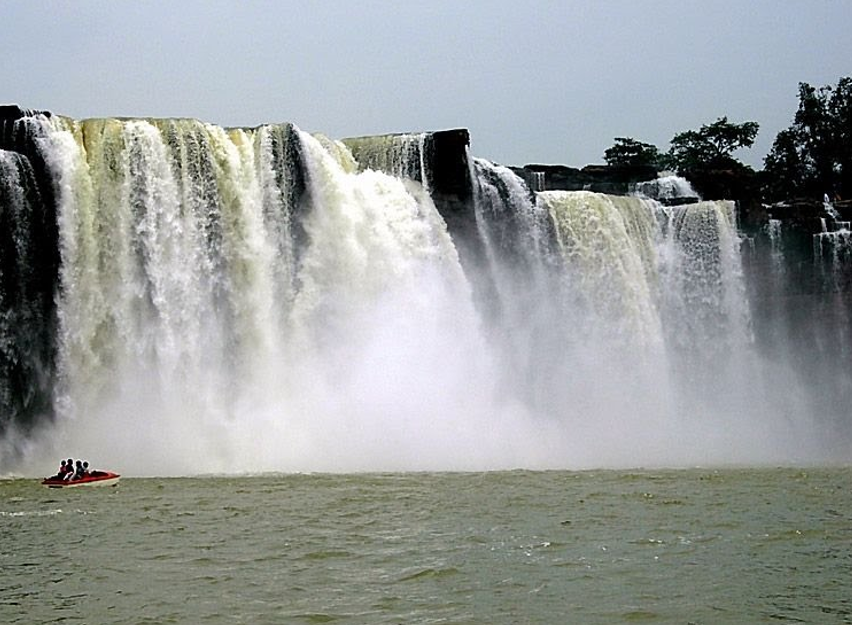
- When it comes to the topmost tourist attractions in Chhattisgarh, Chitrakote Falls inevitably finds its way to the top. This waterfall is located around 50km away from Jagdalpur of Bastar District. Also known as the mini-Niagara Fall of India, this horse-shaped waterfall makes it descends from a height of almost 100ft. Making its way through dense vegetation and cascades, it creates a spectacular sight. The roar of the waterfall reverberates through the surrounding areas, while the mist lingering at the base lends it an artistic view. Chitrakote Falls is formed by the waters of the River Indravati which flows from the Vindhya Mountain range. The best time to visit the waterfall is during the monsoon season, between the months of July and October.
2. Barnawapara Wildlife Sanctuary
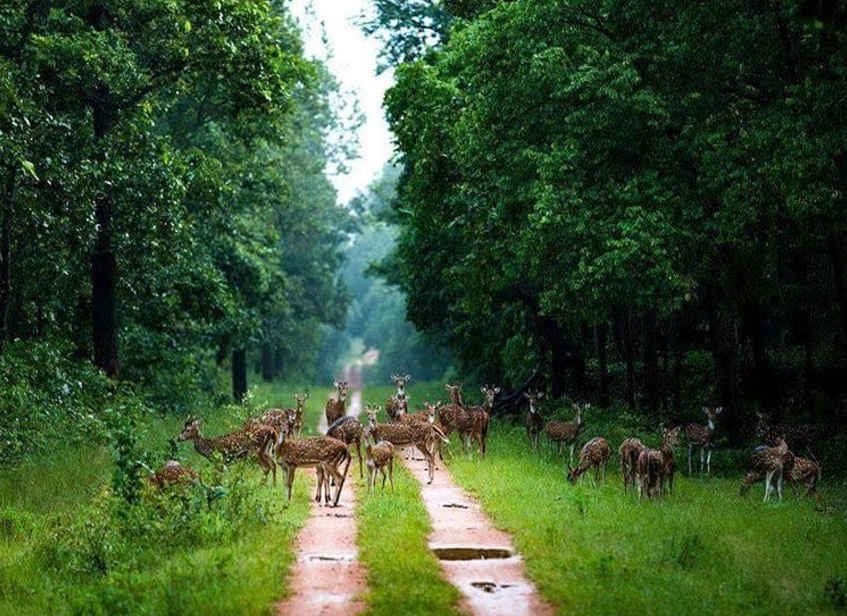
- Located around 100km from Raipur and 45km from Mahasumund City, Barnawapara Wildlife Sanctuary is one of the famous tourist attractions in Chhattisgarh. The sanctuary is home to bar and Nawapara forest villages and derives its name from them. Its landscape mostly consists of flat terrain dotted with occasional low and high hillocks. You should visit this sanctuary to catch a glimpse of the fearless Indian Bison, also known as “Gaur”. The sanctuary also houses other attractions including neelgai, wild boar, sambhar and cheetal. The park also boasts around 150 species of birds. Another delightful sight which you are sure to come across on a visit to this park is the barking deer.
3. Bhoramdeo Temple
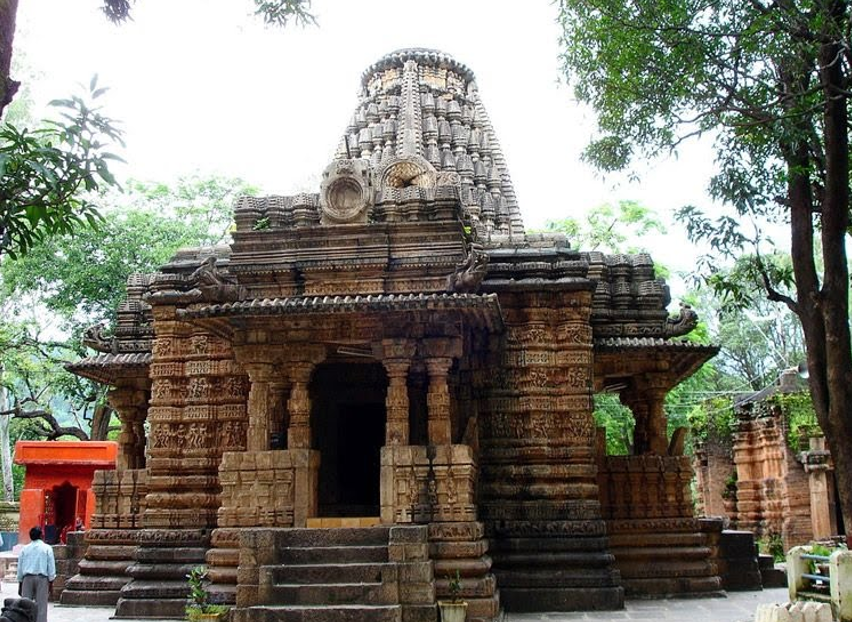
- If you are making a list of the popular tourist destinations to visit in Chhattisgarh, then make sure you include Bhoramdeo Temple in that list. At first sight, the temple bears a striking resemblance to the Sun Temple in Konark or the Khajuraho Temple in Madhya Pradesh. Is it surprising then, that Bhoramdeo Temple is also known as “Khajuraho of Chhattisgarh”? It is believed that this temple was built somewhere around 7th to 11th century by King Ramachandra of the Nag dynasty. The temple is constructed in the nagar style of architecture and dedicated to Lord Shiva. After seeking blessings at the temple, you should check out the magnificent views of the surroundings that the temple offers.
4. Raipur City

- How can you come to Chhattisgarh and not visit Raipur, its capital city? Raipur traces its existence to the 9th century, and the remnants of that period can still be seen in the southern part of the city. Raipur is enthusiastically visited by historians, archaeologists and all those interested in exploring the past. As a tourist, you will find a lot to do and see in this city. One of the attractions is Mahant Ghasidas Memorial Museum, which contains a stunning collection of items used by the different tribes of Chhattisgarh. Doodhadhari Monastery and Temple is also popular with the tourists. To spend a quiet evening, you should head to Budhapara Lake, built by King Brahmadei in 1,404 AD. Other attractions of Raipur are Vivekananda Sarovar, Nandavan Garden and Hajra Waterfall.
5. Sirpur Heritage Site

- One of the famous tourist attractions of Chhattisgarh is Sirpur. Located just 84km from the capital, Raipur, its home to fascinating archaeological remains besides being gifted with traditional cultural heritage and architecture. It’s quite interesting to know that Sirpur finds a mention in the ancient epigraphic records dating back to the 5th to 8th century. Upon visiting this place, you can’t help but notice the slow pace at which life goes on in this quaint village. One of the major attractions is the Laxman Temple. A visit to the Laxman Temple is special because this is the first temple in India made from bricks. The temple, dedicated to Lord Vishnu, rests on an enormous platform and is accessible by steps both in the north and south.
6. Rajim
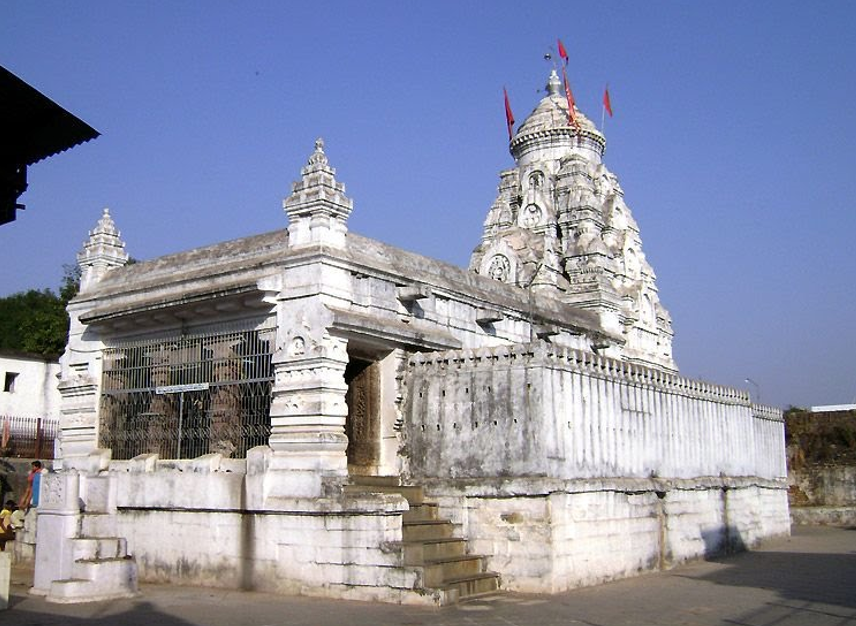
- Chhattisgarh boasts a rich cultural heritage and a beautiful ancient temple. Rajim is one of the places where you can see the cultural side of Chhattisgarh. Another interesting fact about Rajim is that it’s known as the “Prayag” of Chhattisgarh. It’s so-called because it’s the meeting point of the three rivers – Mahanadi (Chitrotpala), Pairi, and Sondur, also called Triveni Sangam. Shri Rajiv Lochan Mandir is a famous ancient temple dedicated to Lord Vishnu. The temple stands on twelve towered columns adorned with exquisite stone carvings which bear the faces of various gods of Hindu mythology. Another fascinating sight is the picture of Lord Buddha seated in a meditative position under the Bodhi tree.
7. Maitri Bagh
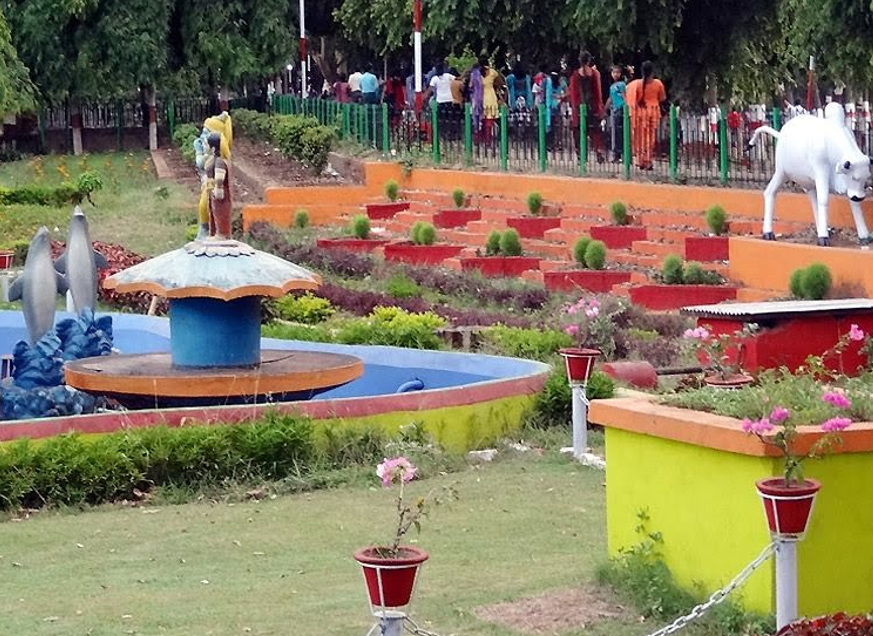
- Maitri Bagh (garden and zoo) is a great place to spend your day in the company of nature and wildlife. Located in Bhilai, the zoo comprises 111 acres of parkland. Maitri Bagh, a friendship garden, was established in the year 1972 by Bhilai Steel Plant (BSP) as a symbol of India –Russia (then USSR) friendship. It is where the locals head for relaxation and recreation. It boasts a massive musical fountain, boating facilities, and perfectly manicured lawns. The park is also home to a zoo which houses an interesting variety of wildlife.
8. Dongargarh
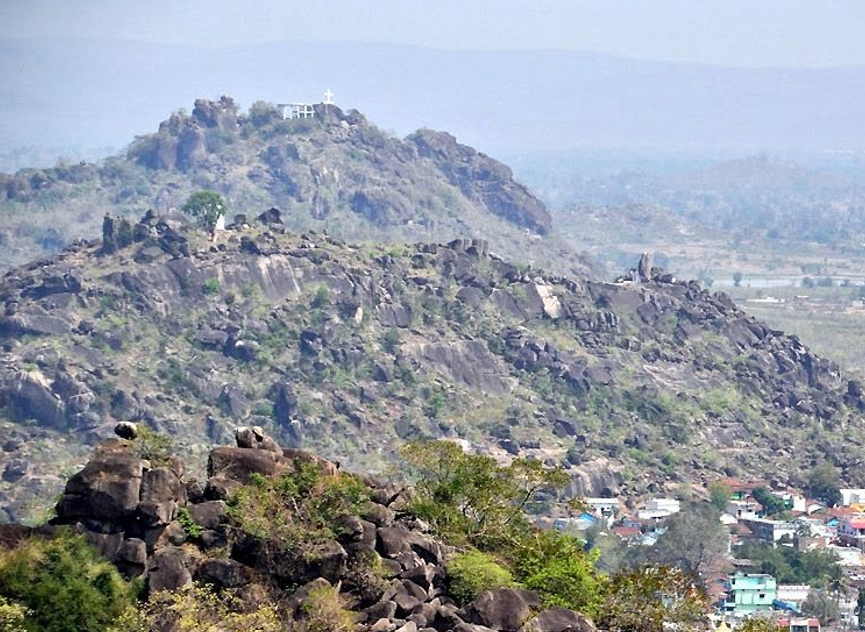
- Dongargarh is considered to be the top pilgrimage destination in Chhattisgarh and also a top tourist attraction. There is a famous temple here by the name of Maa Bamleshwari which stands atop a hilltop at almost 1,600ft. The temple is also referred to as Badi Bamleshwari. Another temple that lies about half a kilometer away from this temple is known as Choti Bamleshwari. The temple attracts thousands of devotees during the time of Navratras of Kavar (during Dusshera) and Chaitra (during Ramnavmi). During the occasion of Navratras, melas (fairs) are organized in the temple which lasts as long as a day. If you happen to be in Chhattisgarh this time of the year, this is something to look forward to.
9. Bhuteshwar Shivaling
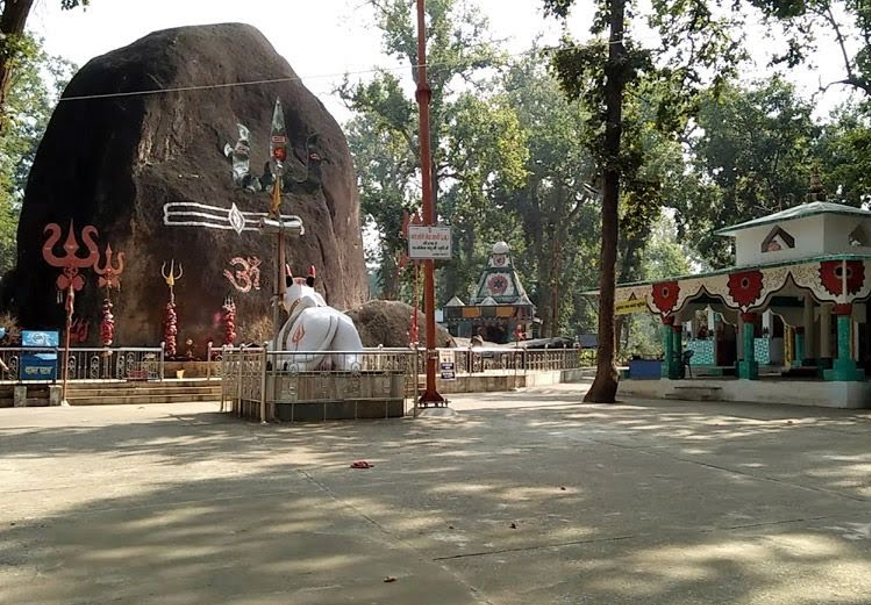
- In the Maroda village of Gariaband district of Chhattisgarh lies an amazing sight. This village owes its popularity to its enormous Shivling, which, some say, is the biggest in the world. However, what is even more interesting is that the Shivling grows by six to eight inches every year. Measuring 18ft tall and 20ft wide, it’s a fascinating sight to come across. During the holy month of Shravan, this site is visited by a large number of devotees from all over the country. The people believe that one can get rid of all worries just by offering a jug of water to the Shivling here.
10. Tirathgarh Falls
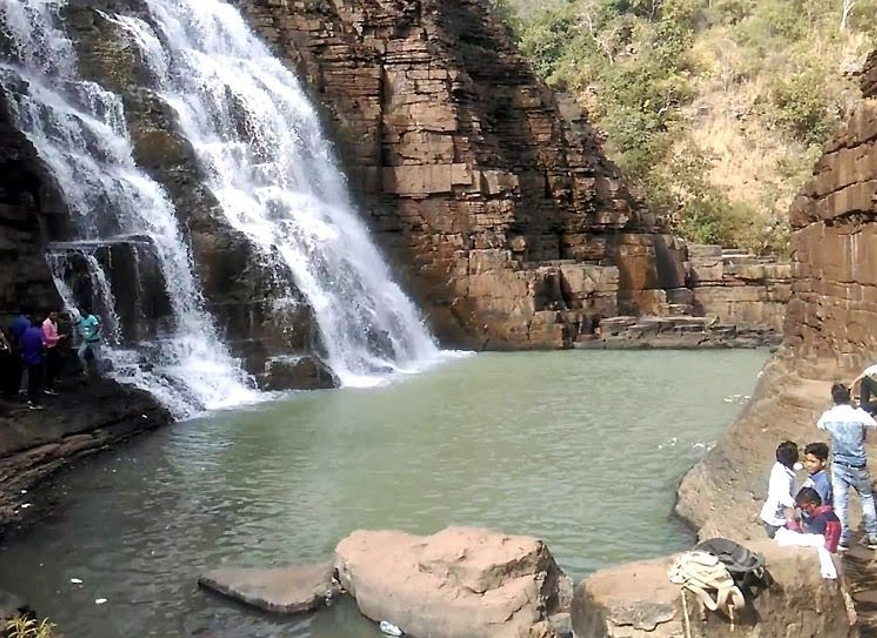
- Tirathgarh Falls is one of the most visited places in Chhattisgarh. The beauty of these falls lies in the way they split into multiple falls as they descend from a height of almost 300ft, thus creating a spectacular sight. The waterfall is surrounded by lush green forest, while a small temple is located beside the falls.
11. Kanker Palace
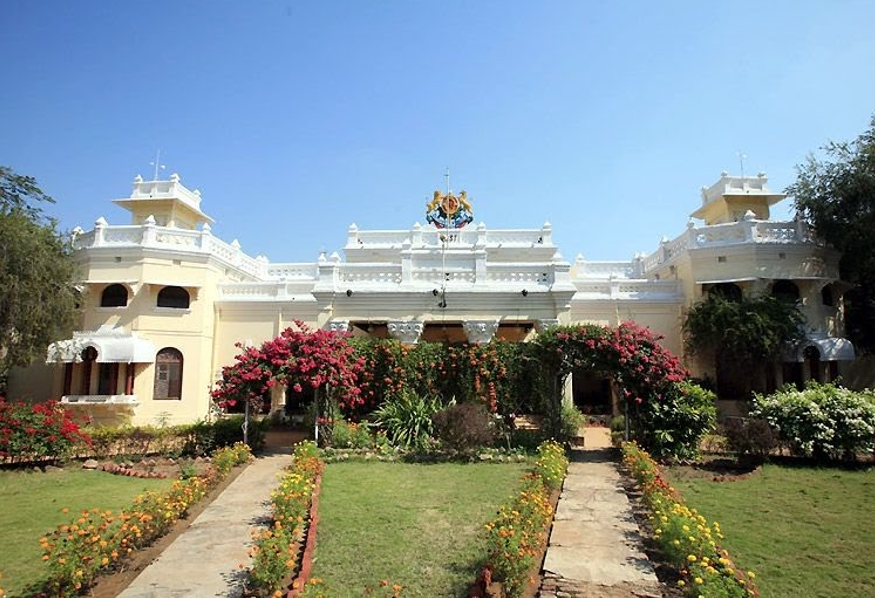
Kanker Palace, now a part of the heritage hotels of India, was built in the first quarter of the last century and was earlier known as Radhanivas Bagicha. The palace, which once served as the residence of the British Agent during the British Raj, is now lived in by the royal family. Kanker Palace, with its colonial-style architecture, is stately and elegant and exudes an old-world charm and ambiance.
12. Achanakmar Tiger Reserve
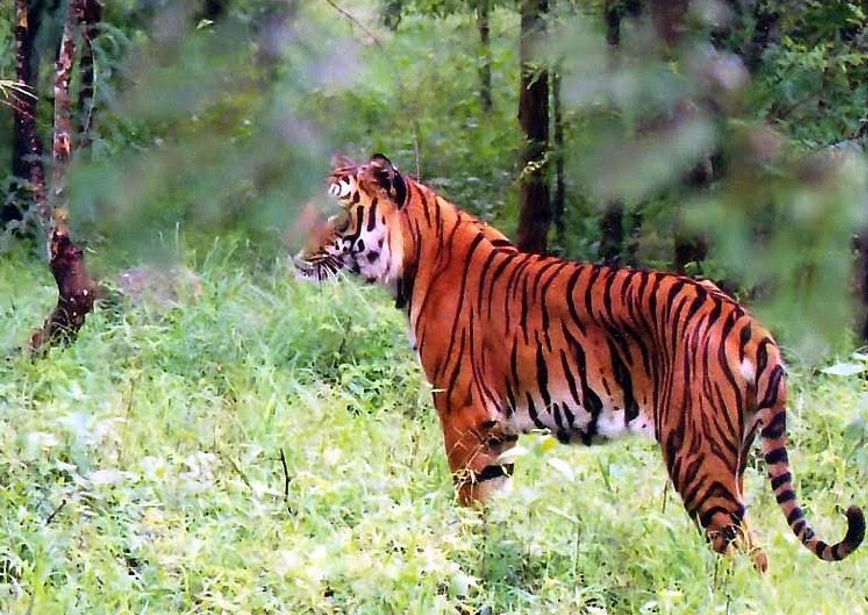
- Achanakmar Tiger Reserve was declared a tiger reserve under Project Tiger in 2009. Extending to over 557sq. km area in Bilaspur district of Chhattisgarh is home to an impressive amount of tigers. Visiting the tiger reserve can be an exciting experience. Apart from the tiger, you can also spot other forms of mammals including Indian giant squirrel, wild dog, hyena, sambar, leopard, and tiger. Achanakmar Tiger Reserve is also home to over 150 species of birds. Visiting the park during your stay in Chhattisgarh can be a rewarding experience.
Climate
- Chhattisgarh has a tropical climate. It is hot and humid in the summer because of its proximity to the Tropic of Cancer and its dependence on the monsoons for rains. Summer temperatures in Chhattisgarh can reach up to 49 °C (113 °F).
Land
- The total geographical area is around 137.90 lakh ha. Of which cultivable land area is 46.77 lakh ha, forest land area is 63.53 lakh ha with more than 2.55 crore population. About 80 percent of the population in the state is engaged in agriculture and 43 percent of the entire arable land is under cultivation.
Natural Vegetation
- The vegetation of Chhattisgarh includes a vast stretch of forests. About 44% of the total area of Chhattisgarh is covered by forest. The trees that are mostly found in the state are Sal, Bamboo, Teak, and trees of mixed deciduous variety. The soil of Chhattisgarh is rich and is known for its red color.
Economy Of Chhattisgarh
- The economy of Chhattisgarh is founded primarily on mining, agriculture, energy production, and manufacturing. The state has major deposits of coal, iron ore, dolomite, and other minerals. The central lowland is known especially for its abundant rice production and the state as a whole provides the bulk of the country’s tendu leaves for bidis. Chhattisgarh also is a significant regional supplier of electricity, from both thermal and hydroelectric generators. The state’s manufacturing activities focus largely on metals production.
Festivals
The state of Chhattisgarh is known for its various, multi-colored festivals and celebrations. The celebrations are generally embellished with dance and music, mysticism and holiness, utter enthusiasm, and above all ancient traditional values.
The most familiar tribes found in the state are Miriam, Baiga, Kamars, Halbas, Gonds, Bhumja, Kawars, etc. Out of these, few tribal families like the Gonds have exchanged cultural practices with the local Hindus, whereas on the other hand, the orthodox tribes like the Baigas and the Kamars have maintained their originality to date. The rituals and festivals practiced by the tribal groups of Chhattisgarh are still being followed, respected, and nurtured from the distant past to the present day.
Few Of The Remarkable Festivals Celebrated By The Tribal Societies Are As Follows
Bastar Dussera – It is believed to have been initiated by Maharaj Purushottam Deo, the fourth Kakatiya leader, in the 15th century. The tribes observe Dussera as a congregation of Devi Maoli (supposed to be the elder sister of Devi Dhanteshwari, the goddess of the Kakatiya clan) along with all her sisters.
Bastar Lokotsav – This event is an extension of Bastar Dussera and takes place more or less during the same time of the year, extending for a fortnight. It gives highlights the preeminent features of Bastar which include its natural beauty as well as fantastic fine art and craftworks.
Fagun Wadai – This commences seven or eight days before Holi and ends a few days after it, the major attractions being the idols and the dances centered around different folk and tribal tales.
Madai Festival – It is celebrated by the tribal communities of Bastar, Kanker, and Dantewada from December to March every year. The ceremony is celebrated in a large compound which begins with a procession of the local deities followed by the rituals, food, and cultural extravaganza.
Narayanpur Mela – This is a fair manifested by celebrations and worship of deities by the tribal families, in the month of February, after Jagdalpur Dussera.
Bhoramdeo Festival – It is the annual festival of the brilliantly constructed Bhoramdeo Temples in the Satpura hills on the river banks of Sankari by King Ramchandra of the Nag Dynasty.
Koriya Mela – It is a traditional fair followed till date, initiated by Ramanuj Pratap Sigh Judeo, the monarch of Koriya State.
Goncha Festival – Goncha is actually a kind of pistol made of bamboo. This festival is celebrated during the time of Ratha Yatra in Jagdalpur, where people shoot at one another in amusement with a Goncha and Tukki (a fruit used as a bullet).
Champaran Mela – Commemorating the birth of Mahaprabhu Vallabhacharya, this fair highlights the splendid cultural lineage of the area and basically witnesses a large gathering of the Vaishnavas from every nook and corner of India. It is generally held in the months of January and February in a small town located 10 kilometers from Rajim.
Maati Ti’aar – It is a festival devoted to the bounties of Mother Earth where the seasonal seeds preserved for sowing are fertilized through rituals and sacrificial blood. It is normally observed during Chait Navratri in March-April.
Hareli Festival – This festival is commonly observed by the farmers in the month of Shravan, by praying for their farm tools and cows, thus imploring for a good harvest.
The First Fruits Festival – As obvious from the name, it is celebrated to mark the occasions of rich harvests – fruits, crops, and grains.
Parad is another festival alike celebrated for the annual hunting mission.
Cuisine
- Being a state which produces staple food in abundance, a great part of the food culture of Chhattisgarh consists of the staple crops such as Rice, Bajra, Jawar. The food of the state is highly inspired by its neighboring states. Hence, a great meal of food of Chhattisgarh promises a great taste and delicious inspirations from its neighbours. Here are few dishes of Chhattisgarh that you must munch on to experience the diversity of food culture of India.
1. Muthia

- Muthia is dumplings cooked in the traditional style of the Chhattisgarh state. Muthia is prepared with rice batter which is seasoned with various spices. The dish is not fried but is steamed and hence it retains the original flavor of its ingredients. Muthia is a famous dish of the state which is usually enjoyed in the breakfast. This dish is also famous among the rural people of the state.
2. Aamat

- Aamat is considered as the Sambhar of the Bastar region of the state. This delectable delicacy of the state is prepared with mixed vegetables which are cooked along with ginger garlic paste and various spices to enhance the flavor of the dish. Traditionally the dish is prepared in bamboo shoots. The bamboo keeps the flavor of the ingredients intact and also adds a unique aroma to the dish. This procedure of cooking Aamat is still prevalent in the remote areas of Bastar. Although, the dish is prepared with modern equipment in the urban areas.
3. Chila

- What we all enjoy eating in all the parts of India is a gift from the Chhattisgarh region. Chila is flat chapati like dish which is prepared with the rice batter mixed with the Urad Daal. The dish is very easy to cook and is very delicious in taste. Chila is an important part of the breakfast meal of the people of Chhattisgarh. To grab the best taste of Chila, complement it with the green chutney.
4. Bhajia
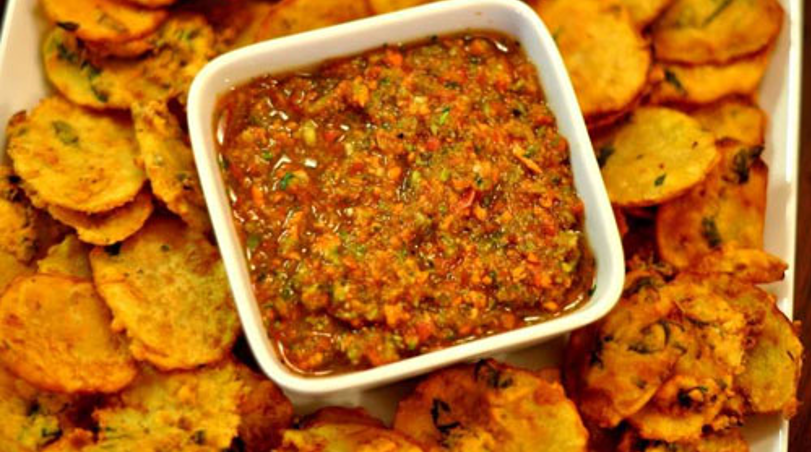
- Bhajia is a famous street food of Chhattisgarh which is very popular among the local people of the state. A local variant of Bhajji, a dish that is commonly found in South India. Bhajia in Chhattisgarh are prepared with different ingredients, each one of them adding a taste to the dish that will get your taste buds going. Bhajia is prepared with gram flour along. Various types of Bhajis such as Mirchi Bhaji- prepared with chili, onion Bhaji prepared with onion, and Aloo Bhaji prepared with potato are some of the famous variants of the dish. The perfect aroma and the right amount of spices add the delectable street food taste to this dish. Bhajia is best enjoyed with a hot cup of tea along with spicy Hari chutney.
5. Sabudana Ki Kichdi

- Sabudana ki Khichdi is one of the healthiest and most delicious cuisines of Chhattisgarh that is not only eaten in the Chhattisgarh but all around the country. Sabudana Ki Khichdi is a dish prepared with soaked Sabudana balls. To add flavor to the dish various vegetables and spices are added that provide a delicious taste to the plate. Sabudana ki Khichdi is fondly eaten during the fast, but it accounts for an important lifestyle cuisine for the people of Chhattisgarh.
6. Bara
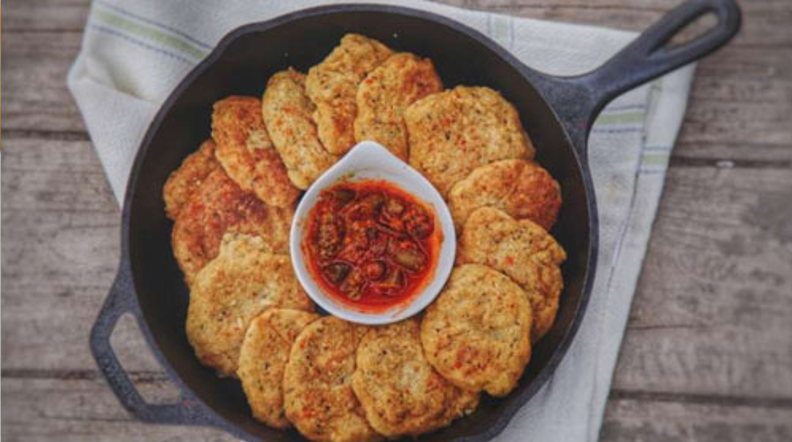
- Bara is a unique variant of the Vada that is eaten in South India. Bara is basically a light snack which is made from the fermented Urad Dal. Various vegetables and spices are added along with the fermented lentils to add perfection to this famous dish of the state. The requirement of minimum oil makes Bara super light and super healthy to eat. This dish represents the food culture of Chhattisgarh on various occasions that take place in the state. Bada is a must serve during the festivals and village fairs of the state. Apart from that, in Bastar region of the state it is compulsory to serve Bara to the guests during the marriage ceremony.
7. Faraa

- If you ever want to taste the Desi-styled Momos then make Faraa your pick to satisfy your taste buds. Faraa is made in the form of dumplings, the main ingredient of the dish being rice. The dough of rice along with the minimum spices are seasoning of coriander leaves is put to steam to get the light and healthy snack that hails from Chhattisgarh.
8. Tilgur
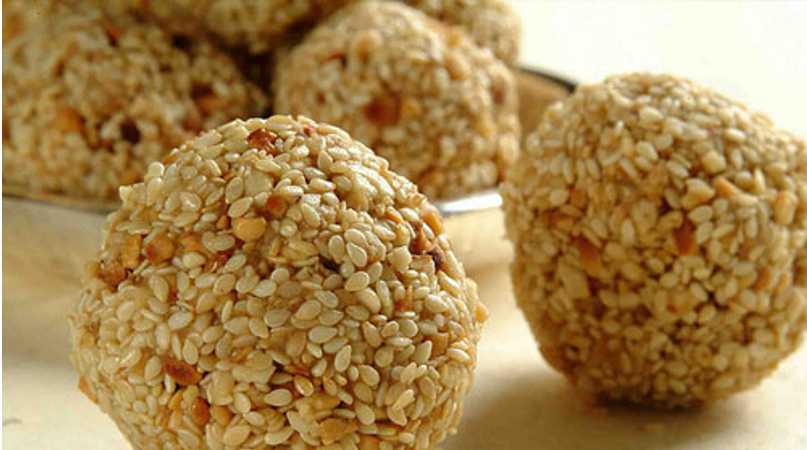
- Tilgur of “Til K Ladoo” is a famous dish that has got it origin from Chhattisgarh state. The roasted sesame seeds are mixed with dark jaggery and peanuts. The mixed is well mixed and is then made into Ladoos to grab the famous dish of the state. Tilgur is a must-served during the various occasions and festivals of the state. Makar Sankranti is the main festival where the people prepare Tilgur.
9. Khurma
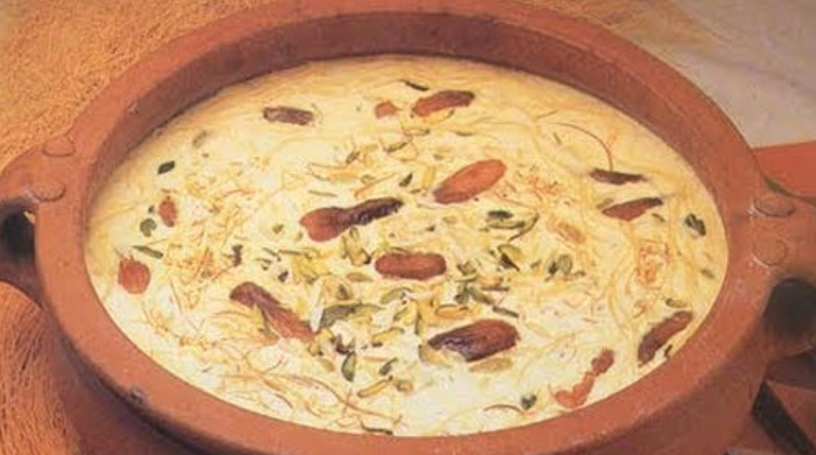
- What is famously known as Sewaiya, a famous dish which is served on Id is a dish that is equally celebrated in Chattisgarh. Khurma is a famous sweet dish from the state of Chattisgarh which is prepared with milk and Vermicillies. The roasted Vermicillies are added to the boiling water along with sugar syrup and rich dry fruits to get an absolutely lip-smacking sweet dish that will surely satisfy your sweet tooth.
10. Bafauri

- Bafuari is a healthy alternative for the oily Pakodas which are every Indian’s favorite snack. Bafauri is a famous dish of the state which is cooked in Chana Daal flour. Various vegetables and spices add a mouth-savoring taste to the dish. The dough is prepared in the form of balls and is steamed. The fact that is not cooked in oil makes it extremely healthy to eat.
11. Dubki Kadi
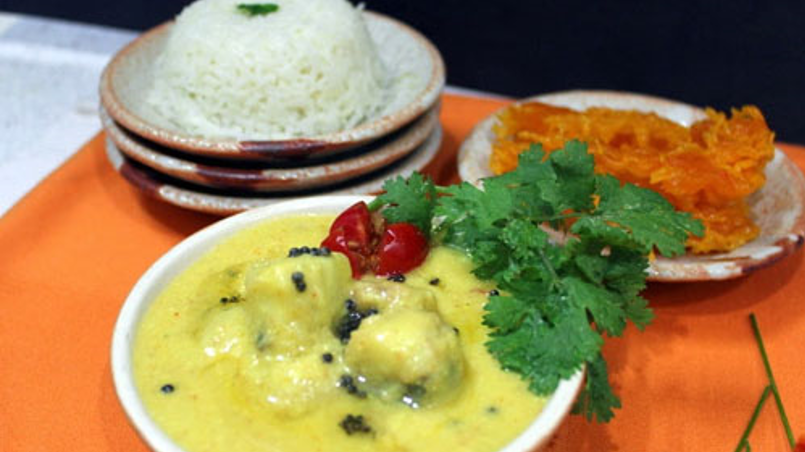
- Dubki Kadi is a dish of Chhattisgarh which makes it into the lunch plates of the people of the state. Dubki Kadi is a pulse-like dish that is mainly cooked with curd. The Pakodas of gram flour is added to the dish which is best complemented with the tangy curry of curd and spices. Apart from Dubki Kadi, there are other variants of the dish such as Arbi kadi, Bhindi kadi, etc. which are equally mouth-watering.
Dressings
- The costumes of the tribal class of the People of Chhattisgarh are very unique and attractive. They dress up with bright and colourful attires. They have a lot of affinity for jewellery, especially around their neck which is usually made of Metal Casts, Silver Ghungroos and Chunky Wooden Bangles. The women are very particular about their sarees which is supposed to be knee length and of bright colours. Men in tribal groups like Halbas, Ghotuls, Abhuj Marias, Murias, etc., wear dhotis and headgears like cotton turbans. The women wear knee-length or full-length sarees in bright colours. The most used fabrics are linen, silk and cotton and they are usually Painted with molten wax. The tie and dye is a common technique used in Chhattisgarh to make fabrics and these are called Batik. The men and women living in the urban area dress like any other People in the cities. Gaudy costumes in striking colours too are features of the tribal festivals.
Arts And Crafts
- Chhattisgarh is known for “Kosa silk” and “lost wax art”. The tribals of Chhattisgarh do intrinsic work to make toran, Placemats, and boxes with the help of shells, mirrors, and fabric. The fibre which is got from the seeds of the marshes with a beautiful ivory color is used in making Potholders, mats, hammocks, bags, and dolls. Since Chhattisgarh is abundant in bamboo the People are involved in building houses, bows and arrows, baskets, fish and bird traps, and a lot of agricultural tools. Chhattisgarh is also known for its handloom Product, Dhruva Patta or the Dhruva Sari.
Naxals In Chhattisgarh
- The Indian state of Chhattisgarh has for long been a center of Naxal and state violence. For decades now, the state government has been involved in a brutal tussle with Maoist groups, with armed violence ensuing from both ends. Civilians in increasingly militarized villages and districts fall prey to the anger of both sides when one mistakenly assumes them to be a member of the other. As a result districts like Bastar, Bijapur, Sukma, and others, are constantly under threat.
Top 13 Interesting Facts About Chhattisgarh
India’s biggest waterfall is situated in Bastar, Chhattisgarh.
The highest peak of the state is the Bailadila range in the Dantewada district with an altitude of 1,276 m.
Chhattisgarh accounts for 15 % of the total steel production of the country.
Chhattisgarh is that it accounts for 70% of Tendu leaves production. These leaves are used to make ‘Bidis’.
Chhattisgarh has 3 National Parks and 11 wildlife sanctuaries making it one of the most important contributors to the flora and fauna map of India.
High Sex Ratio of 991/1000 putting it at 5th among Indian states.
Dantewada is the largest district of Chhattisgarh in terms of area. Raipur is the largest in population.
Panthi, Rawat Nacha, Saila are the main folk dances of the state.
Pandwani is a song and music mixed narration of incidences from Mahabharat. Teejan Bai is a popular Pandwani folk artist. This song form is famous in Chhatisgarh and Madhya Pradesh.
Home to Asia’s first music university Indira Kala Sangeet Vishwavidyalaya.
One of Bollywood’s most famous directors Anurag Basu has done his schooling from Bhilai in the Durg district of Chhattisgarh.
Railways: The state has the highest freight loading in the country and one-sixth of Indian Railway’s revenue comes from Chhattisgarh (CG).
Chhattisgarh is the only state in India that produced tin concentrates.
